CARICA
Carica L., Sp. Pl. 2: 1036. 1753; Gen. Pl. ed. 5: 458. 1754; Bailey, Stand. Cycl. Hort. 1: 665. 1914; Benthal, Trees of Calc. 267. 1933; Bailey, Manual Cult. Pl. ed. 9: 692. 1966; Fl. China @ eFloras. org 13: 150; Fl. Pak. @ eFloras. org p. 1.
Usually trees, up to 10 m tall, unbranched, relatively short lived. Leaves alternate, in clusters at top of trunk, sub peltate, long-petioled, petiole longer than lamina; lamina 30-60 cm long, palmatifid into 7-11 lobes, rarely entire, glabrous. Flowers unisexual or bisexual. Inflorescences axillary; male flowers on long drooping peduncles; female flowers large, on short peduncles. Calyx small, 5-lobed. Male Flowers: Petals 5, united, forming a slender tube; lobes oblong or linear, valvate or contorted. Stamens 10, in 2 series, inserted in throat or corolla tube; filaments short; sterile ovary subulate. Female Flowers: Petals 5, usually free, oblong or linear, fleshy, yellowish or cream- coloured. Carpels 5, syncarpous, ovary sessile,1-locular, ovules numerous, parietal placentation; stigmas 5, inflated or linear. Fruit large succulent, indehiscent, 1-loculed berry, slightly 5-angled. Seeds numerous, ovoid or slightly compressed, arillate.
3 species
Carica papaya
Carica papaya L., Sp. Pl. 2: 1036. 1753; Masters in Hook. f., Fl. Brit. India 2: 599. 1879; Bailey, Stand. Cycl. Hort. 1: 665. 1914; Benthal, Trees of Calc. 267. 1933; Fl. China @ eFloras. org 13: 150; Fl. North Amer. @ eFloras.org 7: 171; Fl. Pak. @ eFloras. org p. 1; Papaya carica Gaertn., Fruct. Sem. Pl. 2: t.122. 1790.
Small palm-like trees with white milky juice, trunk with scars of fallen leaves and a terminal cluster of leaves, bark green to gray or brown. Leaves drooping proximally, erect or spreading distally, subpeltate; petiole 35-70(-100) cm long, hollow, glabrous; leaf blade rounded in general outline, 20-60 cm in diameter, shallowly to deeply palmately 5-9-lobed, lobes lanceolate to ovate, margins entire or further pinnately divided into lanceolate to ovate lobes. Plants mostly dioecious, rarely monoecious, rarely flowers bisexual. Male inflorescences axillary, 30-100 cm long. Male Flowers: Flowers in clusters, sessile, 1.5-2 cm across and 3-6 cm long. Calyx small, ca. 2 mm long, 5-lobed, lobes triangular to linear, acute. Petals 5, connate; tube 3-6 cm long; lobes ca. 1cm x 0.5 cm, oblong, creamy white, twisted in bud. Stamens 10, in 2 whorls, stamens of outer whorl shortly stalked, filaments ca. 1.5 mm long, papillose or pubescent, stamens of inner whorl almost sessile; anthers 1.5- 2 mm long, bithecous, basifixed, longitudinal dehiscence. Pistillode subulate. Female Flowers: Usually solitary or aggregated (2-4) in corymbose cymes in leaf axils, generally 1 reaches maturity, others fall earlier; peduncle short, 1-2 cm long. Bracts fleshy, 1-2 cm long, caducous. Pedicel short or absent. Calyx connate, 5-8 mm long, 5-lobed, lobes acute, green and fleshy. Petals 5, 5-6.5 cm x 1.2-1.8 cm, oblong or lanceolate, obtuse. Ovary 3.5-4 cm x 1.5-1.8 cm, ovoid, 1-locular, many ovules, parietal placentation; stigma lobes 5, fimbriate, ca. 6 mm long.Bisexual Flowers: Corolla tube 1.9-2.5 cm, lobes oblong, ca. 2.8 cm x 0.9 cm. Stamens 5 or 10 in 1 or 2 whorls. Ovary smaller than in female flowers. Fruit a succulent, 1-locular, nearly 5-angled, indehiscent berry, orange yellow or yellow on maturity, cylindric, ovoid-cylindric or subglobose, 20-30 cm long and 8-15 cm in diameter. Sarcocarp soft with a mild pleasant flavour. Seeds numerous, black, ovoid, each enclosed in gelatinous membrane.
Common Names: Papaya, Melon Tree, Pawpaw; Papita (Hindi)
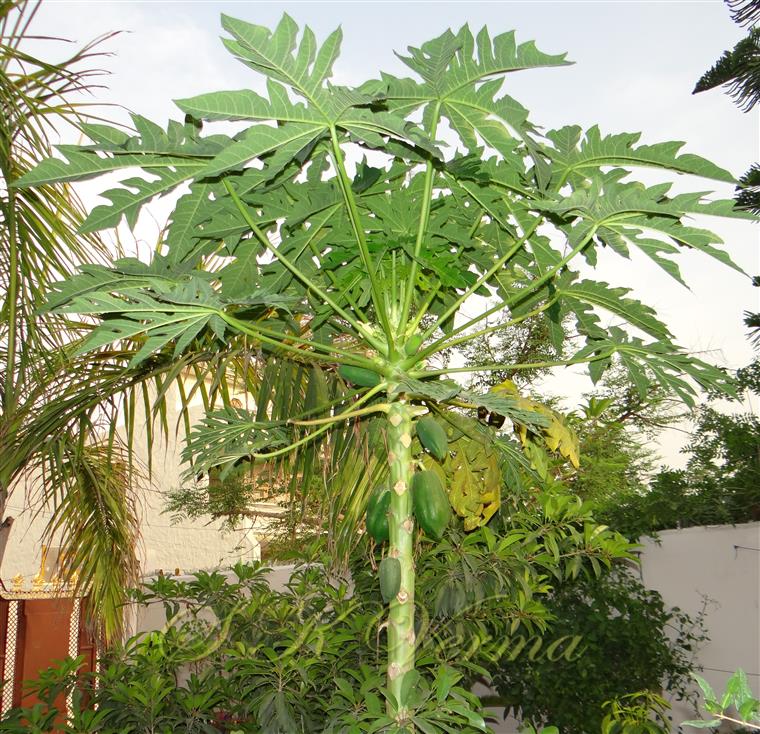
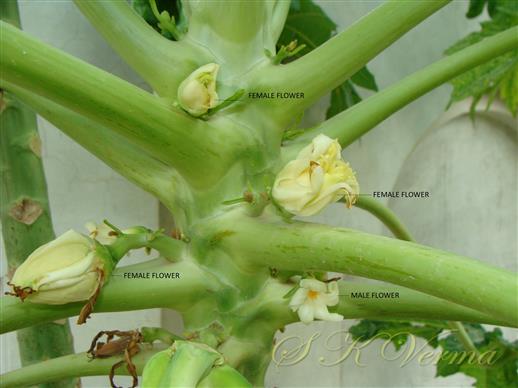
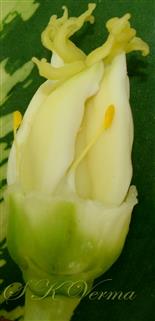
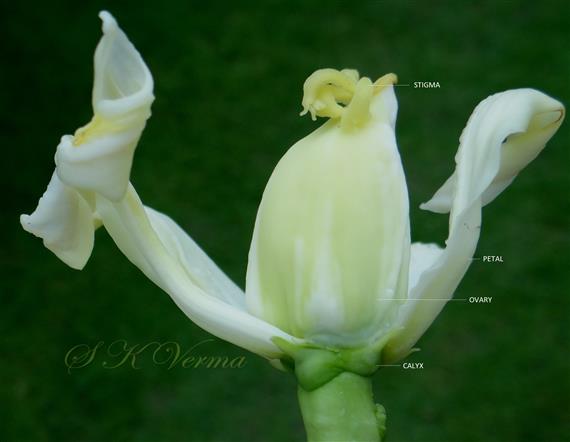
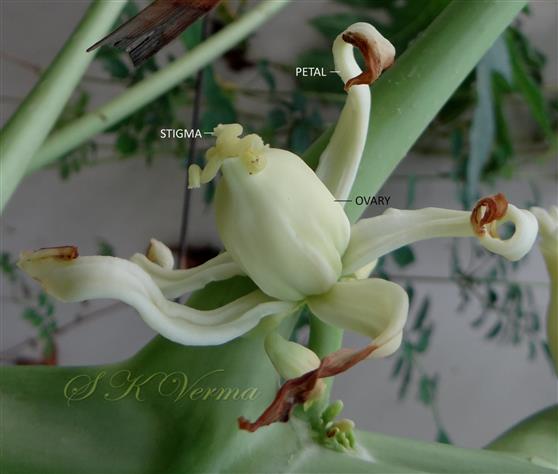
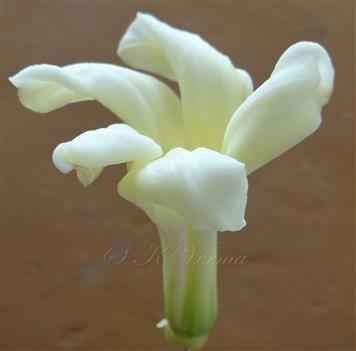
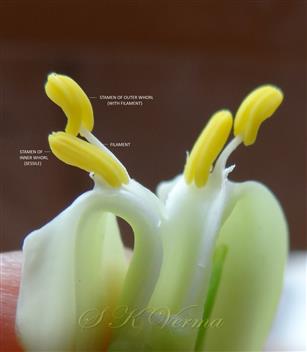
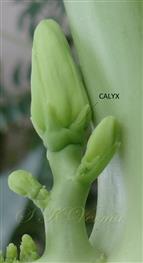

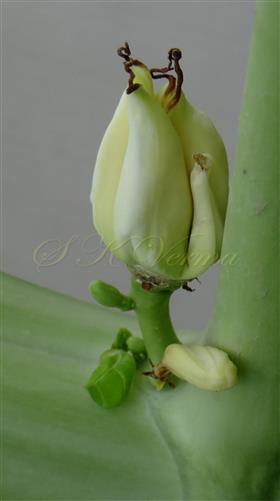
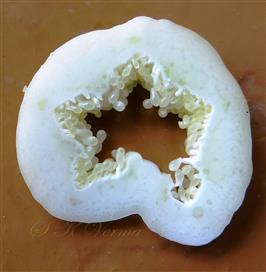
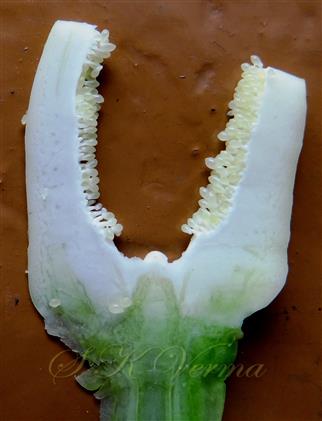
.jpg)
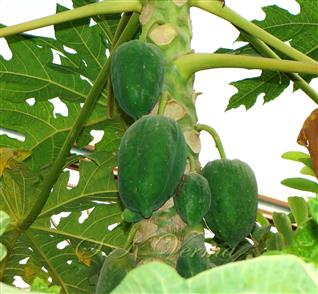









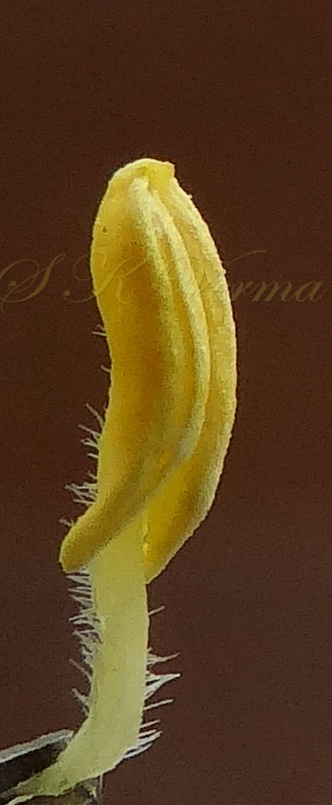



.jpg)
